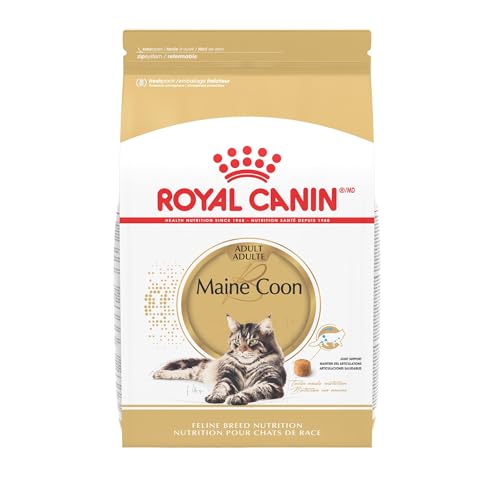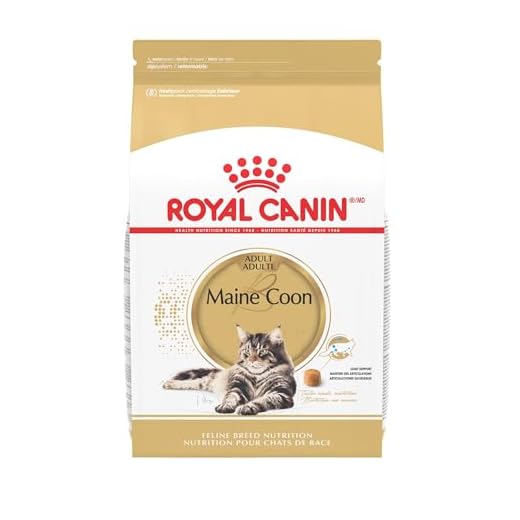



If you’re looking for companions with the softest and longest coats, start with the Maine Coon. Their fur is not only thick and plush but also water-resistant, making them perfect for various climates. These gentle giants are known for their friendly nature and striking appearance.
Another breed worth considering is the Ragdoll. With their semi-longhaired, silky coats, they are not just beautiful but also incredibly affectionate. Their fur requires regular grooming, but the cuddle factor is definitely worth the effort!
Don’t overlook the Persian; their long, flowing locks are iconic. While they demand more grooming attention, their sweet temperament makes every brushing session enjoyable. These elegant creatures bring a touch of luxury to any home.
For a unique option, check out the Birman. Their stunning blue eyes and soft, medium-length fur create a captivating appearance. These affectionate cats are known for their playful and gentle demeanor, making them great companions.
Lastly, consider the Norwegian Forest Cat. Their thick, double-layered fur is designed to withstand cold weather. Known for their playful and adventurous spirit, they are perfect for those who enjoy an active feline friend.
Long, Luxurious Coats
Persians are the ultimate choice for those seeking a plush, flowing coat. Their fur requires regular grooming, but the effort results in a stunning appearance. The thick undercoat paired with long, silky strands creates a breathtaking look.
Ragdolls are equally impressive with their semi-long hair, which feels incredibly soft to the touch. Their gentle nature and affectionate demeanor complement their beautiful coats, making them ideal companions.
Norwegian Forest breeds boast a rugged yet soft texture that’s designed to withstand harsh weather. Their double coat consists of a woolly undercoat and a water-resistant outer layer, offering both beauty and functionality.
Angoras flaunt a stunningly long and fluffy coat that is both eye-catching and delightful to pet. Regular brushing keeps their fur in pristine condition, ensuring they always look their best.
Finally, the Maine Coon is known for its impressive mane and tufted ears. Their fur is not only long but also surprisingly resilient, requiring less maintenance compared to other breeds. This makes them a fantastic option for those who love a majestic look with less hassle.
Persian Cats and Their Luxurious Coats
Persians are known for their stunningly beautiful coats that command attention. Their fur is long and flowing, requiring regular grooming to maintain its exquisite appearance. Daily brushing is essential to prevent matting and to keep their luxurious locks in top condition.
These felines possess a unique undercoat that adds to the volume of their fur, creating a plush, soft texture that feels incredible to the touch. It’s important to use a wide-toothed comb and a slicker brush for effective detangling. Bathing them occasionally with a gentle cat shampoo can also help keep their coat clean and shiny.
Persians come in various colors and patterns, each showcasing their fur’s beauty. From solid colors to exotic tabby patterns, every Persian has a unique look that stands out. Their fur not only looks amazing but also provides warmth and comfort, making them perfect lap companions during chilly days.
| Care Tips | Frequency |
|---|---|
| Daily brushing | Every day |
| Bathing | Every 4-6 weeks |
| Regular vet check-ups | Every year |
Choosing a Persian means committing to grooming as a part of your daily routine. The effort pays off when you see their gorgeous coat reflecting the light and their eyes sparkling with joy. They truly are a sight to behold!
Ragdoll Breed Characteristics and Fur Texture

The Ragdoll breed stands out with its enchanting coat and delightful personality. I can tell you that their fur is semi-long and remarkably plush, offering a luxurious feel that invites petting.
Here are some key features of Ragdolls:
- Coat Density: Their fur is soft and silky, with a medium to high density, making it both beautiful and resilient.
- Color Patterns: Ragdolls display various colorpoint patterns, including bi-color, mitted, and traditional colorpoint, enhancing their striking appearance.
- Grooming Needs: Regular brushing is necessary to prevent matting, especially around the underbelly and behind the ears, where their fur tends to be thicker.
- Temperature Sensitivity: Ragdolls are known for their temperature-regulated coats, which feel cool to the touch in warmer weather, providing comfort.
Overall, the Ragdoll’s fur not only contributes to its stunning looks but also complements its affectionate and gentle demeanor, making them an ideal companion for many.
Norwegian Forest Cats: Adapting to Cold Climates
These magnificent creatures are well-equipped to thrive in frigid environments. Their double-layered coat consists of a dense undercoat and a water-repellent outer layer, allowing them to stay warm and dry during harsh winters. The thick fur around their necks resembles a mane, providing extra insulation during the coldest months.
Physical Features
The robust build of Norwegian Forests contributes to their resilience. Their sturdy bodies and large paws act like natural snowshoes, enabling them to traverse snowy terrains effortlessly. The tufted ears help in retaining body heat and minimizing noise from the wind.
Care Requirements
Maintaining their luxurious coat requires regular grooming. I recommend a good brush at least once a week to prevent matting and tangles. A quality pet drinking fountain for cats can also ensure they stay hydrated, supporting their overall health and fur quality.
By understanding the unique adaptations of these felines, you can appreciate their beauty and ensure they remain healthy and happy in any environment.
Birman Cats: Beauty and Maintenance of Their Fur
For those who admire elegance, Birman companions stand out with their stunning coats. These felines boast semi-long hair that is both silky and luxurious, making them a favorite among cat enthusiasts. Regular grooming is key to keeping their stunning appearance. Aim for at least two to three grooming sessions each week to prevent tangles and mats.
The undercoat tends to be lighter and softer than the outer coat, which means using a wide-toothed comb followed by a slicker brush works wonders. This approach not only removes loose hair but also distributes natural oils throughout their coat, enhancing its shine.
Bathing occasionally–perhaps once every few months–can help maintain their cleanliness, especially if they enjoy outdoor adventures. Use a gentle cat shampoo, and ensure thorough rinsing to avoid skin irritation. After bathing, a careful drying process with a towel will help retain their fluffiness.
Nutrition plays a significant role in the vibrancy of their coat. A high-quality diet rich in omega fatty acids supports skin health and promotes a beautiful, healthy sheen. Always provide fresh water to keep them hydrated, as this also contributes to a healthy coat.
Lastly, regular check-ups with a veterinarian can help catch any potential skin issues early. With a bit of effort, your Birman will shine like the star they are!
Himalayan Cats: Unique Traits of Their Long Fur

Himalayan companions stand out with their stunning coats that are both luxurious and plush. Their fur is a beautiful blend of color points and a creamy base, making them visually striking. This breed’s long hair requires dedicated grooming to maintain its luster and prevent matting. Regular brushing is essential, ideally every few days, to keep their coats in top condition and to minimize shedding.
Maintenance Tips
To keep their fur healthy, I recommend using a wide-toothed comb followed by a slicker brush. This two-step approach effectively removes tangles and distributes natural oils throughout the coat. Bathing should be done occasionally, using specific shampoos designed for long-haired breeds, ensuring the coat remains clean and free from dirt and grease.
Health Considerations
Proper diet is crucial for maintaining a vibrant coat. High-quality food rich in omega fatty acids promotes healthy skin and a shiny appearance. Additionally, keeping their living environment clean, including using the best environmentally friendly dishwasher detergents for cleaning, helps prevent skin irritations and allergies that can affect their fur. Regular veterinary check-ups are also important to catch any health issues early that could impact their luxurious coat.
British Longhair: Understanding Their Coat Care Needs
Grooming is a key aspect of maintaining the beautiful, dense coat of British Longhairs. I recommend brushing their luxurious hair at least two to three times a week. This prevents matting and helps remove loose hairs, keeping the coat healthy and shiny. During seasonal changes, daily grooming may be necessary to manage shedding.
Bathing and Product Selection

Occasional baths can be beneficial, especially if your feline friend gets into something messy. Use a high-quality shampoo designed for long-haired breeds to maintain coat softness. Avoid human shampoos, as they can lead to skin irritation.
Diet and Hydration
A nutritious diet plays a significant role in coat health. I recommend high-quality cat food rich in omega fatty acids, which promote a shiny and healthy appearance. Ensure access to fresh water to keep the skin hydrated, as good hydration supports overall fur quality.
Factors Influencing Fur Softness in Longhaired Breeds
To achieve that luxurious feel in a long-haired companion, several elements play a role. Genetics is the primary factor, determining the inherent texture and density of the coat. Specific breeds are naturally predisposed to softer hair due to their lineage.
Dietary Impact
Nutrition significantly affects coat quality. A balanced diet rich in:
- Omega fatty acids
- High-quality proteins
- Vitamins A and E
ensures a shiny and plush appearance. Regularly incorporating fish oil or flaxseed oil can enhance softness.
Grooming Techniques

A consistent grooming routine is vital for maintaining silky locks. Here are some tips:
- Brush at least 3-4 times a week to prevent matting.
- Use a wide-toothed comb for detangling.
- Consider using conditioning sprays specifically designed for long-haired breeds.
Proper grooming not only removes loose hairs but also distributes natural oils, contributing to a softer texture.
Environmental factors also play a part. Humidity can impact the coat’s softness and overall feel. In dry climates, using a humidifier can help maintain the coat’s integrity. Regular baths with gentle, hydrating shampoos are beneficial, but frequency should be balanced to avoid stripping natural oils.











